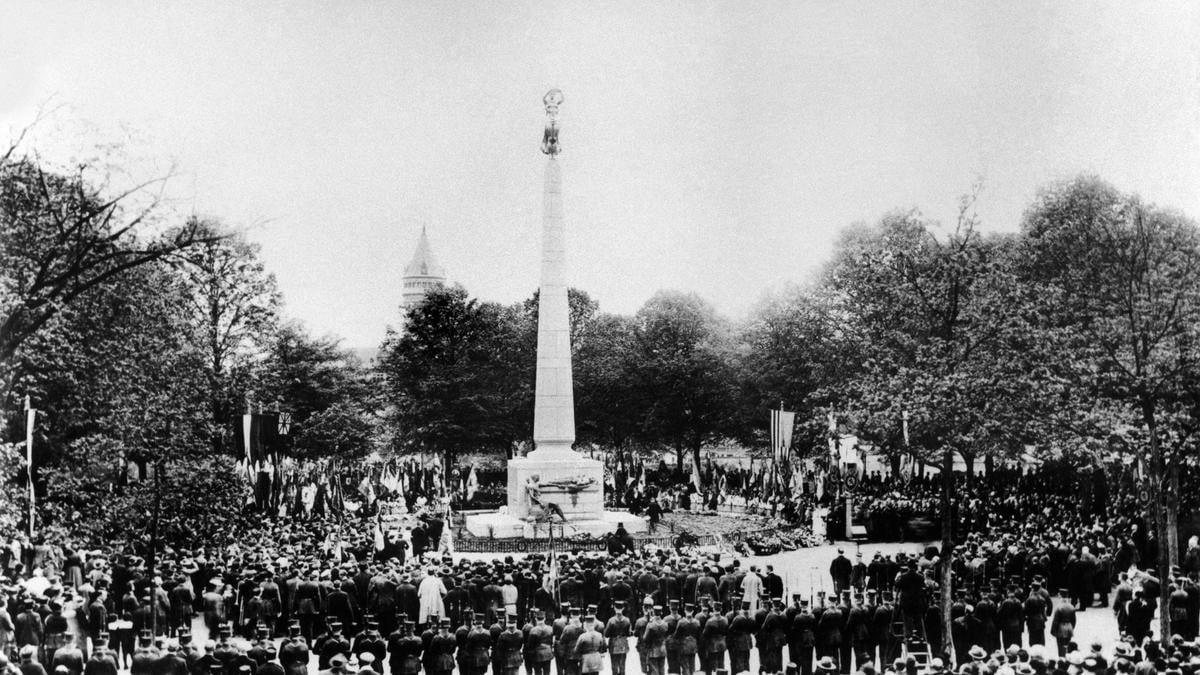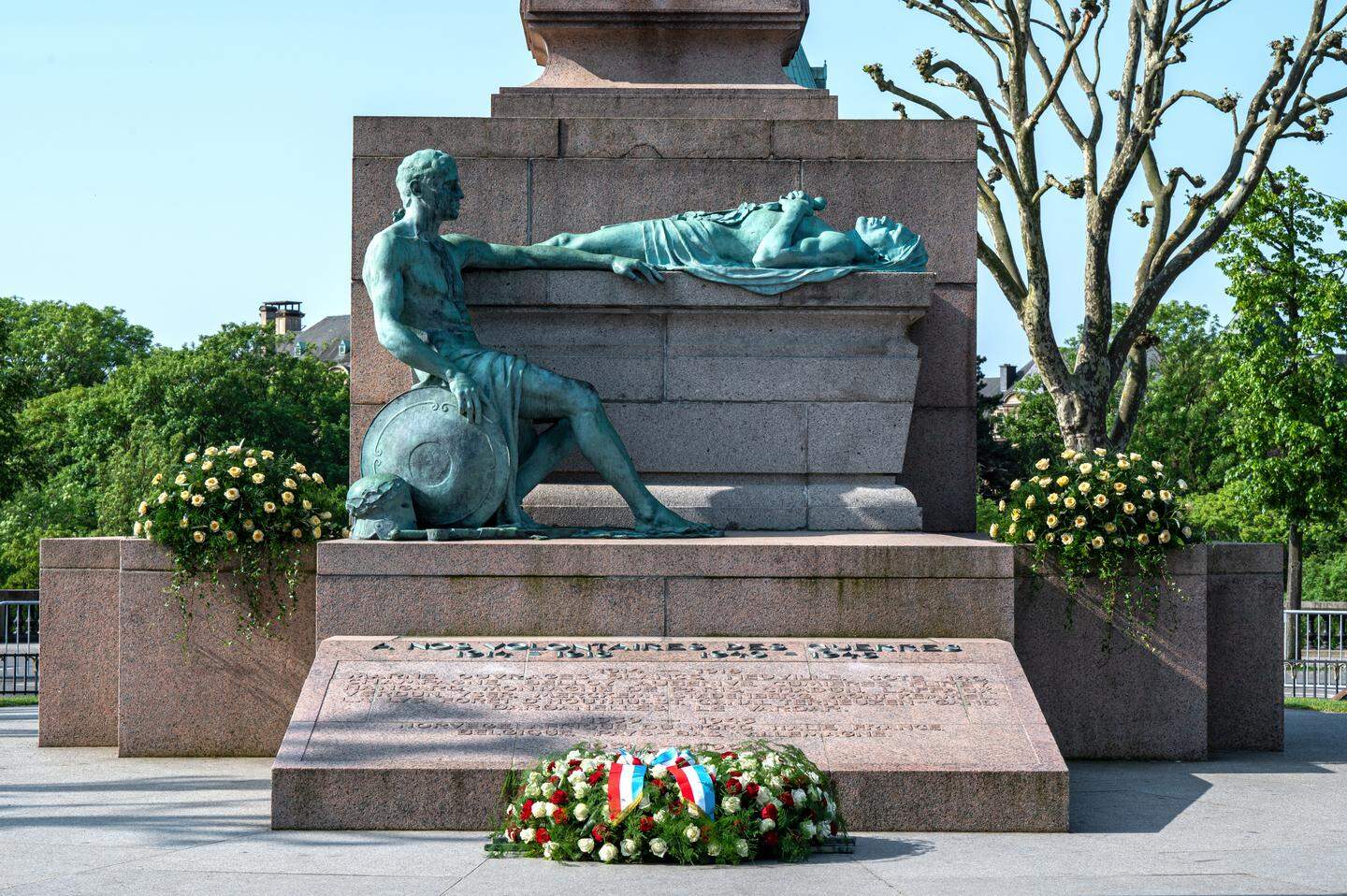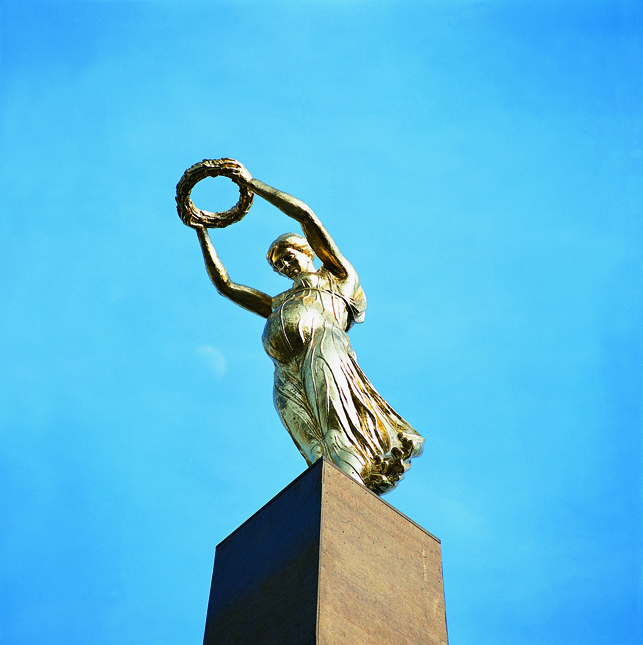It is one of Luxembourg’s most iconic monuments, yet few people truly know its history. The Monument of Remembrance, commonly known as the Gëlle Fra, stands proudly on the Place de la Constitution. Today, let’s dive into the fascinating story of this golden statue, which watches over Luxembourg’s fallen soldiers.
A tribute to Luxembourg’s soldiers
In August 1914, German troops invaded Luxembourg. Around 3,000 young Luxembourgers voluntarily joined the Allied forces, but few returned home. Most perished in the battles of the First World War.
By December 1918, a committee had been formed to erect a national monument in honour of the soldiers who had been wounded or killed in France. A competition was launched in February 1920 to select the design that would pay tribute to the fallen. The winning project was created by Claus Cito, a 38-year-old Luxembourgish sculptor.
Cito’s design featured a 20-metre-high obelisk, with two bronze figures at its base representing a soldier and his fallen comrade. The centrepiece of the monument was a three-metre-tall gilded female figure standing atop the obelisk, holding a laurel wreath above the soldiers. The Gëlle Fra thus became the embodiment of an angel watching over those who had died for their country.
Construction began in late December 1921, and the monument was officially inaugurated on 27 May 1923. More than just a tribute, it was seen by the citizens of Luxembourg as a symbol of the nation's independence and freedom.

Credits: LW-Archives
Destruction, disappearance, and revival
On 10 May 1940, German troops invaded Luxembourg, ushering in a dark chapter for the country. In an effort to assert their dominance, the occupying forces targeted national symbols of independence, and the Gëlle Fra was no exception. After an initial failed attempt to destroy it, the statue and its obelisk were finally toppled on 21 October 1940 using a steel cable, shattering the monument into three pieces.
Following Luxembourg’s liberation by the Allies, a partial reconstruction of the pedestal and the two bronze soldiers was carried out. However, the golden statue itself remained missing. It was not until 1980 that two officials from the City of Luxembourg rediscovered it beneath the stands of the old municipal stadium. Five years later, in May 1985, the Gëlle Fra was restored to its rightful place and re-inaugurated on National Day.
However, the statue now bears the scars of its turbulent past, particularly from its fall in 1940. The restored version differs slightly from Cito’s original: its gaze is now directed downward, and its feet had to be repaired.
Originally built to honour Luxembourgish soldiers who died in the First World War, the Gëlle Fra now also commemorates those who fought in the Second World War, the Korean War, and the Luxembourgers who voluntarily joined the Spanish Civil War.

Credits: Alain Piron
A tribute that sparks controversy
From the moment it was inaugurated in 1923, the Gëlle Fra became the subject of heated debate. The golden statue faced strong criticism from religious authorities. Although it was intended to represent an angel, it was draped in a thin layer of transparent fabric, which was deemed inappropriate.
Moreover, its location on Place de la Constitution, just a few metres from the cathedral, was seen by the Church as a provocation.
In 2001, during the exhibition “Luxembourg, the Luxembourgers: Consensus and Restrained Passions”, which aimed to highlight the Grand Duchy’s socio-cultural and historical sensitivities, Croatian artist Sanja Iveković unveiled an alternative version of the Gëlle Fra—one that did not sit well with everyone. Her artwork, titled Lady Rosa of Luxembourg, depicted the Gëlle Fra as pregnant, sparking outrage. Many saw it as an insult to the national symbol. The artist explained that her work sought to challenge the way women are often confined to purely symbolic roles, denying them any real influence over history.

Credits: MoMa
Having survived the trials of history, the Gëlle Fra remains, more than ever, a powerful symbol of resilience and national identity for Luxembourg.
Discover more about Luxembourg’s history!

.png)
